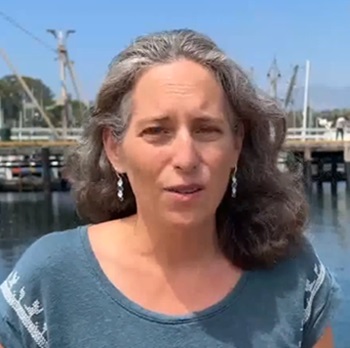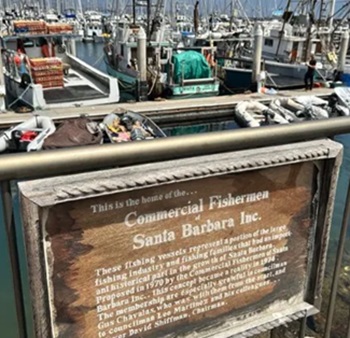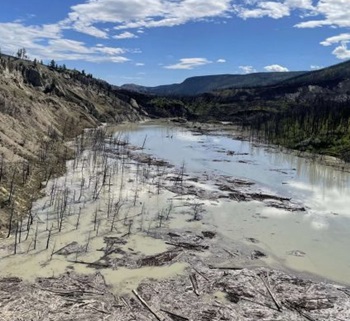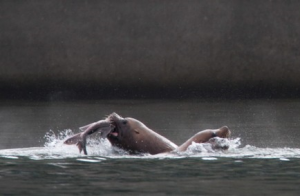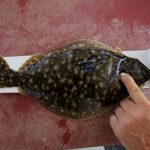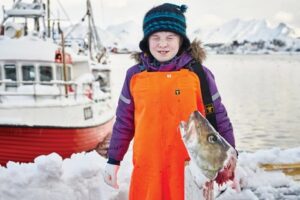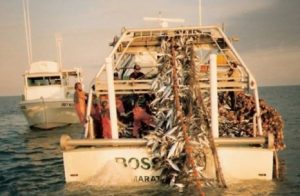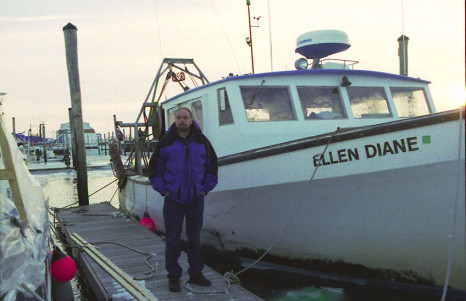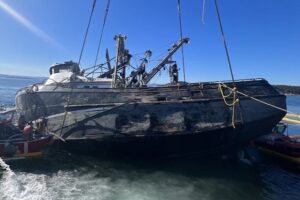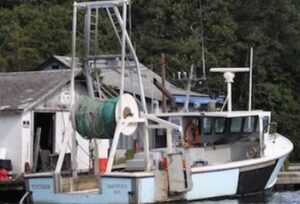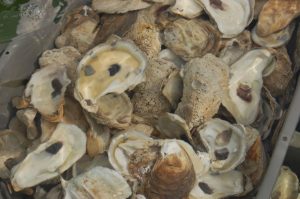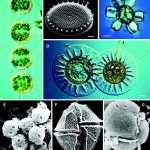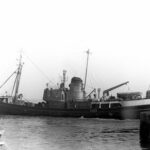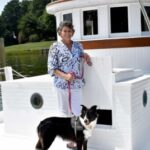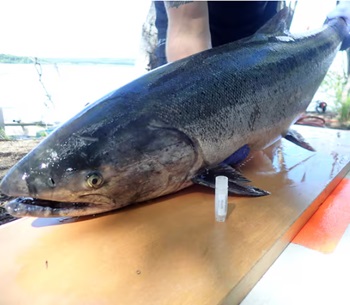 A federal appeals court on Friday reversed a judge’s decision that would have effectively shuttered an Alaska salmon fishery, a result environmentalists sought in order to protect endangered whales and threatened wild Chinook salmon populations. A three-judge panel of the San Francisco-based 9th U.S. Circuit Court of Appeals held that a judge in Seattle last year abused his discretion by vacating a key authorization issued by the U.S. National Marine Fisheries Services for the fishery’s summer and winter Chinook salmon harvests. U.S. District Judge Richard Jones at the urging of the Wild Fish Conservancy had in May 2023 vacated part of a so-called incidental take statement the fisheries service issued in 2019 that authorized the commercial Chinook salmon troll fishery in southeast Alaska. more, >>CLICK TO READ<< 10:39
A federal appeals court on Friday reversed a judge’s decision that would have effectively shuttered an Alaska salmon fishery, a result environmentalists sought in order to protect endangered whales and threatened wild Chinook salmon populations. A three-judge panel of the San Francisco-based 9th U.S. Circuit Court of Appeals held that a judge in Seattle last year abused his discretion by vacating a key authorization issued by the U.S. National Marine Fisheries Services for the fishery’s summer and winter Chinook salmon harvests. U.S. District Judge Richard Jones at the urging of the Wild Fish Conservancy had in May 2023 vacated part of a so-called incidental take statement the fisheries service issued in 2019 that authorized the commercial Chinook salmon troll fishery in southeast Alaska. more, >>CLICK TO READ<< 10:39
Category Archives: Pacific
Wave Energy: Big waves off Oregon coast fuel cutting-edge effort to harness the ocean for electricity
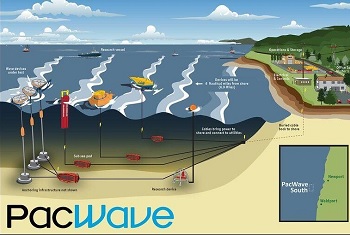 The effort is different from the contentious offshore wind leases planned along the southern Oregon coast. The wave test site is experimental, has a smaller footprint and could directly benefit coastal economies. It also was developed with community input, winning local support. “Wave energy is incredibly attractive as a future renewable power source,” said Bryson Robertson, director of the Pacific Marine Energy Center at Oregon State University. (more project links) “Not only is it capable of generating power close to where we need it, but it can generate it at the time we need it and we can predict it. Which is very useful and powerful for meeting consumer demand.” “It’s different from wind and solar because wave energy just keeps going and going,” Hales said. “It’s more reliable. It could become an essential part of a diversified energy portfolio.” more, >>CLICK TO READ<< 09:39
The effort is different from the contentious offshore wind leases planned along the southern Oregon coast. The wave test site is experimental, has a smaller footprint and could directly benefit coastal economies. It also was developed with community input, winning local support. “Wave energy is incredibly attractive as a future renewable power source,” said Bryson Robertson, director of the Pacific Marine Energy Center at Oregon State University. (more project links) “Not only is it capable of generating power close to where we need it, but it can generate it at the time we need it and we can predict it. Which is very useful and powerful for meeting consumer demand.” “It’s different from wind and solar because wave energy just keeps going and going,” Hales said. “It’s more reliable. It could become an essential part of a diversified energy portfolio.” more, >>CLICK TO READ<< 09:39
Federal government will hold first-ever offshore wind auction off the Oregon coast in October
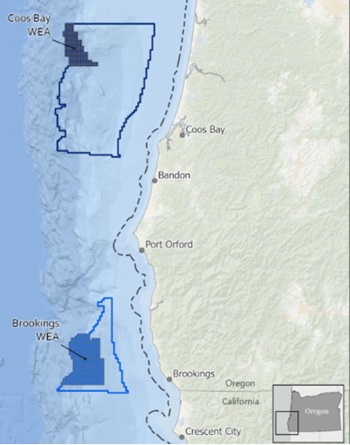 The federal government says it will hold Oregon’s first-ever offshore wind energy lease sale in mid-October to auction two areas where developers can build floating wind turbines. The announcement by the U.S. Department of the Interior on Thursday cements the development of offshore wind in Oregon despite vehement opposition from coastal communities, the state’s fishing industry and local tribes who say the process was rushed and ignored local input. The auction, to be held by the Bureau of Ocean Energy Management on Oct. 15, will include two areas totaling nearly 195,000 acres. The Coos Bay lease area consists of 61,203 acres and is about 32 miles from shore and the Brookings lease area is 133,792 acres and around 18 miles from shore. more, >>CLICK TO READ<< 08:56
The federal government says it will hold Oregon’s first-ever offshore wind energy lease sale in mid-October to auction two areas where developers can build floating wind turbines. The announcement by the U.S. Department of the Interior on Thursday cements the development of offshore wind in Oregon despite vehement opposition from coastal communities, the state’s fishing industry and local tribes who say the process was rushed and ignored local input. The auction, to be held by the Bureau of Ocean Energy Management on Oct. 15, will include two areas totaling nearly 195,000 acres. The Coos Bay lease area consists of 61,203 acres and is about 32 miles from shore and the Brookings lease area is 133,792 acres and around 18 miles from shore. more, >>CLICK TO READ<< 08:56
Klamath River and its salmon free-flowing after final two dams breached in California
 After more than a century of being blocked by a series of dams, the Klamath River is once again free flowing after two cofferdams in northern California were breached on Wednesday, according to the office of Governor Gavin Newsom. Letting the river flow without being constrained by dams gives native fish species, like steelhead, coho and Chinook salmon a chance to regain access to more than 400 miles of spawning and rearing habitat on the Klamath and its tributaries in California and Oregon. It allows Native American groups in the region like the Klamath, the Yurok and Karuk Tribes to regain access to culturally important food sources. The river was once a major habitat for salmon, but construction of hydroelectric dams in California and Oregon over the last century took a toll on water quality and reduced the population of the fish, which have to migrate to the Pacific Ocean, then return upstream to reproduce. The four dams on the river made that journey much more difficult. more, >>CLICK TO READ<< 10:54
After more than a century of being blocked by a series of dams, the Klamath River is once again free flowing after two cofferdams in northern California were breached on Wednesday, according to the office of Governor Gavin Newsom. Letting the river flow without being constrained by dams gives native fish species, like steelhead, coho and Chinook salmon a chance to regain access to more than 400 miles of spawning and rearing habitat on the Klamath and its tributaries in California and Oregon. It allows Native American groups in the region like the Klamath, the Yurok and Karuk Tribes to regain access to culturally important food sources. The river was once a major habitat for salmon, but construction of hydroelectric dams in California and Oregon over the last century took a toll on water quality and reduced the population of the fish, which have to migrate to the Pacific Ocean, then return upstream to reproduce. The four dams on the river made that journey much more difficult. more, >>CLICK TO READ<< 10:54
County residents butt heads with harbor commissioners over offshore wind
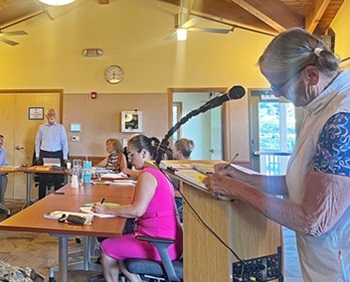 Unhappy residents accused Port San Luis Harbor District commissioners of being untruthful about their connections to offshore wind companies during a chaotic, heated Aug. 27 meeting. “I would like clarification on why several days before your last meeting [July 23] why Clean Energy Terminals had on their website that you were partners, in partnership, and that you had come to an agreement,” REACT Alliance President Mandy Davis asked during public comment. “It was there on their website and to refer to someone as a partner is very, very specific.” Davis’ comment comes a month after commissioners voted 3-2, with Commissioners Mary Matakovich and Jim Blecha dissenting, to collaborate with Clean Energy Terminals (CET) on studies focused on whether Port San Luis can be a potential site to support offshore wind development. more, >>CLICK TO READ<< 09:42
Unhappy residents accused Port San Luis Harbor District commissioners of being untruthful about their connections to offshore wind companies during a chaotic, heated Aug. 27 meeting. “I would like clarification on why several days before your last meeting [July 23] why Clean Energy Terminals had on their website that you were partners, in partnership, and that you had come to an agreement,” REACT Alliance President Mandy Davis asked during public comment. “It was there on their website and to refer to someone as a partner is very, very specific.” Davis’ comment comes a month after commissioners voted 3-2, with Commissioners Mary Matakovich and Jim Blecha dissenting, to collaborate with Clean Energy Terminals (CET) on studies focused on whether Port San Luis can be a potential site to support offshore wind development. more, >>CLICK TO READ<< 09:42
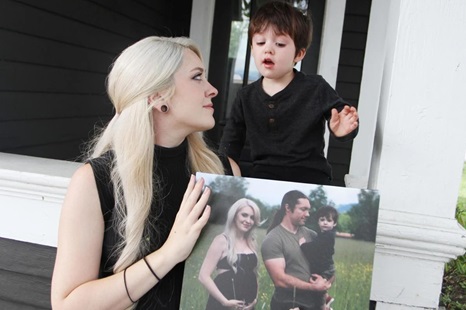
Everson man falls overboard commercial boat, dies
In the early hours of Saturday, Aug. 24, Cheyenne Hoy gave birth to her baby girl, Fiona Rose. Tragically, her husband Clayton was not able to be with his family. Hoy, a commercial fisherman, went missing on July 25 after he fell overboard his boat near Egegik, Alaska. On Aug. 12, he was confirmed dead. Cheyenne Hoy said Clayton “was our everything and sole provider for our family.” “He truly loved fishing and learned everything from his father,” Cheyenne said. Through his father, Guy Hoy, Clayton became a commercial salmon fisherman. Since age 15, he crewed with his father, then became his own captain. Cheyenne explained that 2024 was Clayton’s third year with his own boat and he “was already one of the top boats in the bay.” more, >>CLICK TO READ<< 07:12
Commercial fisherman Clayton Hoy, who went missing July 25 after a fall overboard near Egegik, was confirmed dead on August 12. Clayton Hoy, a 36-year-old from Washington, fell overboard from a commercial fishing boat, the F/V Warmaster. more, >>CLICK TO READ<< 18:14
Overall impact of disastrous pink salmon fishery still being calculated
 Fallout from what’s being described by commercial fishermen as a pink salmon disaster in Prince William Sound is still being calculated, but troubling times began earlier this year when high insurance costs kept some from ever going out in their boats. Low runs of humpies, mounting fuel costs and some processors opening up late all appear to be spelling big economic challenges for the Prince William Sound economy. “It’s going to be a big hit for the town,” said Cordova City Council Member Kristen Carpenter, who is anticipating a significant loss of raw fish tax dollars to the city this year. “It was an absolute disaster,” said veteran salmon harvester John Renner, chair of the Alaska Department of Fish and Game’s Copper River/Prince William Sound Advisory Committee. One young man lost his boat, said Renner. “Anyone who has payments to make is in trouble unless they have dual permits and are making money off of gillnetting or longlining,” he said. “Fuel is $5 a gallon and insurance costs are up 25%.” more, >>CLICK TO READ<< 13:55
Fallout from what’s being described by commercial fishermen as a pink salmon disaster in Prince William Sound is still being calculated, but troubling times began earlier this year when high insurance costs kept some from ever going out in their boats. Low runs of humpies, mounting fuel costs and some processors opening up late all appear to be spelling big economic challenges for the Prince William Sound economy. “It’s going to be a big hit for the town,” said Cordova City Council Member Kristen Carpenter, who is anticipating a significant loss of raw fish tax dollars to the city this year. “It was an absolute disaster,” said veteran salmon harvester John Renner, chair of the Alaska Department of Fish and Game’s Copper River/Prince William Sound Advisory Committee. One young man lost his boat, said Renner. “Anyone who has payments to make is in trouble unless they have dual permits and are making money off of gillnetting or longlining,” he said. “Fuel is $5 a gallon and insurance costs are up 25%.” more, >>CLICK TO READ<< 13:55
Viking Traps score on board F/V Northwestern
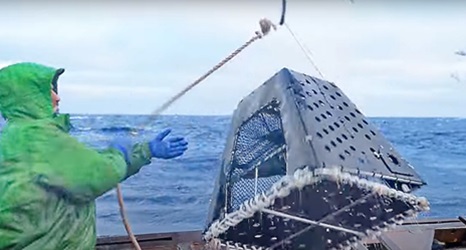 The Viking Traps made by Norwegian company Proffteiner have been a success with Deadliest Catch skipper Sig Hansen, who has been trying them out on board Bering Sea crabber F/V Northwestern. The episode is aired on the Discovery Channel this month. The standard crab traps are roughly two metres square and a metre high, and weight around 300kg. These are lifted on board singly, and there’s no handling these traps by hand. But before starting fishing, it’s Sig Hansen’s first job to find where the crabs are, and that’s where the Viking Traps have scored. Photos, more, >>CLICK TO READ<< 12:30
The Viking Traps made by Norwegian company Proffteiner have been a success with Deadliest Catch skipper Sig Hansen, who has been trying them out on board Bering Sea crabber F/V Northwestern. The episode is aired on the Discovery Channel this month. The standard crab traps are roughly two metres square and a metre high, and weight around 300kg. These are lifted on board singly, and there’s no handling these traps by hand. But before starting fishing, it’s Sig Hansen’s first job to find where the crabs are, and that’s where the Viking Traps have scored. Photos, more, >>CLICK TO READ<< 12:30
SLO County activists oppose offshore wind projects. So they’re taking fight to national level
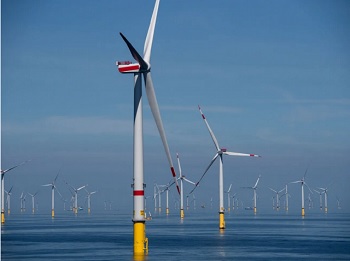 There’s a new national group fighting offshore wind development, and you may recognize some of their members. Two San Luis Obispo County anti-offshore wind activists have founded an organization called NOOA, the National Offshore-wind Opposition Alliance. So far, the group includes at least seven environmental and fishing organizations from the East and West coasts, according to President Mandy Davis. Group membership includes REACT Alliance, Protect the Coast Pacific Northwest, the Morro Bay Commercial Fishermen’s Organization, Green Oceans, Protect Our Coast New Jersey, Protect Our Coast Long Island New York and the Long Island Commercial Fishing Association, Davis said. more, >>CLICK TO READ<< 06:43
There’s a new national group fighting offshore wind development, and you may recognize some of their members. Two San Luis Obispo County anti-offshore wind activists have founded an organization called NOOA, the National Offshore-wind Opposition Alliance. So far, the group includes at least seven environmental and fishing organizations from the East and West coasts, according to President Mandy Davis. Group membership includes REACT Alliance, Protect the Coast Pacific Northwest, the Morro Bay Commercial Fishermen’s Organization, Green Oceans, Protect Our Coast New Jersey, Protect Our Coast Long Island New York and the Long Island Commercial Fishing Association, Davis said. more, >>CLICK TO READ<< 06:43
Canadian government to build conservation hatchery in Prince George to boost Chinook and sockeye salmon recovery
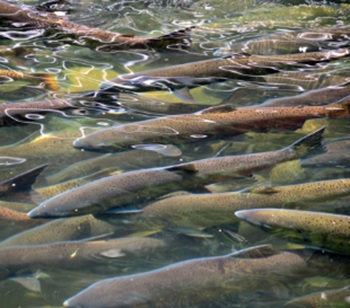 The Canadian federal government has announced plans to build a new Pacific salmon hatchery in Prince George, British Columbia (B.C.). This initiative, supported by the Pacific Salmon Strategy Initiative (PSSI), aims to bolster the conservation and recovery of wild Chinook and sockeye salmon populations. Operated by Fisheries and Oceans Canada (DFO) in partnership with the Lheidli T’enneh First Nation and Canfor Pulp Ltd., the hatchery will be constructed this fall on federal land along the Nechako River, near its junction with the Fraser River. “As a Nation, fisheries are central to the work we do,” said Chief Dolleen Logan, on behalf of Lheidli T’enneh First Nation. “We remain committed to maintaining biodiversity in our traditional territory while enhancing salmon populations throughout the region.” more, >>CLICK TO READ<< 13:02
The Canadian federal government has announced plans to build a new Pacific salmon hatchery in Prince George, British Columbia (B.C.). This initiative, supported by the Pacific Salmon Strategy Initiative (PSSI), aims to bolster the conservation and recovery of wild Chinook and sockeye salmon populations. Operated by Fisheries and Oceans Canada (DFO) in partnership with the Lheidli T’enneh First Nation and Canfor Pulp Ltd., the hatchery will be constructed this fall on federal land along the Nechako River, near its junction with the Fraser River. “As a Nation, fisheries are central to the work we do,” said Chief Dolleen Logan, on behalf of Lheidli T’enneh First Nation. “We remain committed to maintaining biodiversity in our traditional territory while enhancing salmon populations throughout the region.” more, >>CLICK TO READ<< 13:02
Alaska Bering Sea Crabbers Welcome Representation on NPFMC
 In a significant development for the Alaska Bering Sea crab industry, the U.S. Secretary of Commerce has announced the appointment of Jamie Goen, a dedicated advocate from the Alaska Bering Sea Crabbers (ABSC) to the North Pacific Fishery Management Council (NPFMC). Goen will fill the vacant Washington state seat for the remainder of the term, following the unexpected passing of former member Kenny Down. This appointment marks a two-year term where Goen is expected to continue the work of ensuring fair and sustainable fisheries management. Goen’s appointment has been met with enthusiasm from the crab fishing community, which has long valued her commitment to the industry. more, >>CLICK TO READ<<10:30
In a significant development for the Alaska Bering Sea crab industry, the U.S. Secretary of Commerce has announced the appointment of Jamie Goen, a dedicated advocate from the Alaska Bering Sea Crabbers (ABSC) to the North Pacific Fishery Management Council (NPFMC). Goen will fill the vacant Washington state seat for the remainder of the term, following the unexpected passing of former member Kenny Down. This appointment marks a two-year term where Goen is expected to continue the work of ensuring fair and sustainable fisheries management. Goen’s appointment has been met with enthusiasm from the crab fishing community, which has long valued her commitment to the industry. more, >>CLICK TO READ<<10:30
Athearn Marine Agency Boat of the Week: 68′ Gamage Steel Dragger, 3412 Cat, Permits available
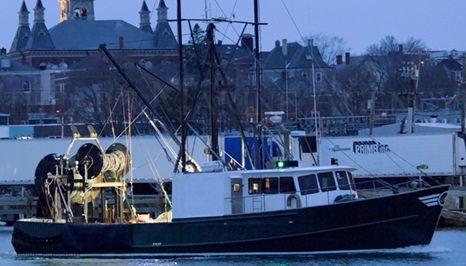 To review specifications, information, and 21 photos’, >click here< To see all the boats in this series, >click here< 06:23
To review specifications, information, and 21 photos’, >click here< To see all the boats in this series, >click here< 06:23
New state report shows solid year for commercial fishing in Oregon, Lincoln County-based fleet
 Oregon’s commercial fishing industry had a solid, if not record-breaking, year in 2023, according to a new report from the state Employment Department. Statistics covering everything from pounds of seafood landed, revenues from individual fisheries and total employment showed strong signs of at least keeping up with historical averages, said the report’s author, Shaun Barrick, a workforce economist for Lincoln, Clatsop, Columbia and Tillamook counties. “Typically, commercial fishing in Oregon is really a mixed bag because of how many species we target,” Barrick said. “But, as always, it’s hard to overstate how important it is for employment. And the cultural impact of fishing is huge.” Here are some numbers highlighting Barrick’s report. more, >>CLICK TO READ<< 10:10
Oregon’s commercial fishing industry had a solid, if not record-breaking, year in 2023, according to a new report from the state Employment Department. Statistics covering everything from pounds of seafood landed, revenues from individual fisheries and total employment showed strong signs of at least keeping up with historical averages, said the report’s author, Shaun Barrick, a workforce economist for Lincoln, Clatsop, Columbia and Tillamook counties. “Typically, commercial fishing in Oregon is really a mixed bag because of how many species we target,” Barrick said. “But, as always, it’s hard to overstate how important it is for employment. And the cultural impact of fishing is huge.” Here are some numbers highlighting Barrick’s report. more, >>CLICK TO READ<< 10:10
‘A massive enterprise’: California’s offshore wind farms are on a fast track
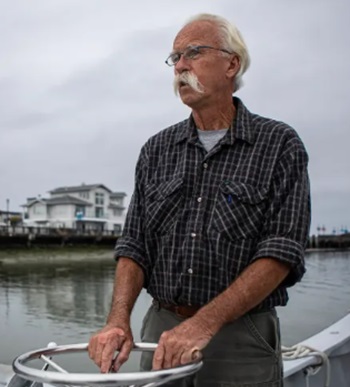 A new gold rush doesn’t begin to describe the urgency of harnessing wind off California when it comes to meeting climate goals. The first, substantial step has been taken: In December 2022, the federal government auctioned off 583 square miles of ocean waters off Humboldt Bay and the Central Coast’s Morro Bay to five energy companies — with more lease sales expected. The five wind farms will hold hundreds of giant turbines, each about 900 feet high, as tall as a 70-story building. But the still-evolving technology of floating wind farms makes it challenging to analyze the viability and impacts of these projects. Experts say a lack of existing data on potential environmental effects means that much of the scientific understanding will only begin after they are operating. A CalMatters analysis shows that California’s offshore wind projects carry a host of implications and uncertainties. Photos, more, >>CLICK TO READ<< 14:07
A new gold rush doesn’t begin to describe the urgency of harnessing wind off California when it comes to meeting climate goals. The first, substantial step has been taken: In December 2022, the federal government auctioned off 583 square miles of ocean waters off Humboldt Bay and the Central Coast’s Morro Bay to five energy companies — with more lease sales expected. The five wind farms will hold hundreds of giant turbines, each about 900 feet high, as tall as a 70-story building. But the still-evolving technology of floating wind farms makes it challenging to analyze the viability and impacts of these projects. Experts say a lack of existing data on potential environmental effects means that much of the scientific understanding will only begin after they are operating. A CalMatters analysis shows that California’s offshore wind projects carry a host of implications and uncertainties. Photos, more, >>CLICK TO READ<< 14:07
Commercial Fisherman Kevin Doyle of San Diego and Dutch Harbor, has passed away
 Kevin started working in Alaska’s commercial fishing industry when he was 18 years old. He started as an entry level fish processor, gaining years of experience; and climbing the industry ladder all the way to Captain of his own fishing boat for Global Seas Company. He was an innovator who embraced and implemented the technologies that would lead to advanced safety, efficiency, and sustainability in the industry. He could not have been more proud of his career and boat, the “F/V Bering Defender,” but even more so, of his hard working and loyal crew. Kevin’s love and devotion for wife Dee and daughter Victoria was uncompromising and fueled the peace, happiness, and adventure that he and his family shared. more, >>CLICK TO READ<< 09:50
Kevin started working in Alaska’s commercial fishing industry when he was 18 years old. He started as an entry level fish processor, gaining years of experience; and climbing the industry ladder all the way to Captain of his own fishing boat for Global Seas Company. He was an innovator who embraced and implemented the technologies that would lead to advanced safety, efficiency, and sustainability in the industry. He could not have been more proud of his career and boat, the “F/V Bering Defender,” but even more so, of his hard working and loyal crew. Kevin’s love and devotion for wife Dee and daughter Victoria was uncompromising and fueled the peace, happiness, and adventure that he and his family shared. more, >>CLICK TO READ<< 09:50
After 32 years of family ownership, Point Loma’s commercial fishing marina drifts toward a port takeover
 Tom Driscoll’s commercial fishing wharf at the north eastern tip of America’s Cup Harbor in Point Loma is falling apart. The marina’s four, fixed piers — home to as many as 120 fishing boats in their prime — appear to be on the brink of collapse. The business model gave way long ago. The substandard conditions will remain suspended in time until the Port of San Diego assumes control of the facility at some future date. The agency is pushing Driscoll out of the marina that has held the family name for 32 years, but also forcing him to stay put for now. Port commissioners considered and rejected two formal redevelopment proposals from Driscoll, the first in 2017 and the other in 2022. Then, in late 2022, the agency declined to renew Driscoll’s lease, opting instead to move forward with its own takeover and redevelopment plan for what it’s now calling the Shelter Island Commercial Fishing Wharf. more, >>CLICK TO READ<< 13:39
Tom Driscoll’s commercial fishing wharf at the north eastern tip of America’s Cup Harbor in Point Loma is falling apart. The marina’s four, fixed piers — home to as many as 120 fishing boats in their prime — appear to be on the brink of collapse. The business model gave way long ago. The substandard conditions will remain suspended in time until the Port of San Diego assumes control of the facility at some future date. The agency is pushing Driscoll out of the marina that has held the family name for 32 years, but also forcing him to stay put for now. Port commissioners considered and rejected two formal redevelopment proposals from Driscoll, the first in 2017 and the other in 2022. Then, in late 2022, the agency declined to renew Driscoll’s lease, opting instead to move forward with its own takeover and redevelopment plan for what it’s now calling the Shelter Island Commercial Fishing Wharf. more, >>CLICK TO READ<< 13:39
Shrimp boat returns from fishing grounds with ‘full load’ of trash
 This journey began on the recommendation of an experienced Jeju fisherman. Han Cheol-nam, 62, the head of Shinsan-ri Fishing Village in Jeju Island’s Seogwipo, spoke with a troubled expression to this reporter who had come to investigate the sea polluted with trash. “Was our sea really so overrun with trash that it was beyond recovery? Was this not just fishermen complaining about their reduced income?” Despite enjoying seafood regularly, I had never really considered the conditions in which fish and other creatures lived before reaching our tables. This prompted me to board a fishing vessel for an extended period to observe and assist with operations in the waters off Jeju, where a variety of marine species are caught. Photos, more, >>CLICK TO READ<< 09:39
This journey began on the recommendation of an experienced Jeju fisherman. Han Cheol-nam, 62, the head of Shinsan-ri Fishing Village in Jeju Island’s Seogwipo, spoke with a troubled expression to this reporter who had come to investigate the sea polluted with trash. “Was our sea really so overrun with trash that it was beyond recovery? Was this not just fishermen complaining about their reduced income?” Despite enjoying seafood regularly, I had never really considered the conditions in which fish and other creatures lived before reaching our tables. This prompted me to board a fishing vessel for an extended period to observe and assist with operations in the waters off Jeju, where a variety of marine species are caught. Photos, more, >>CLICK TO READ<< 09:39
US appeals court allows Alaska fishery to remain open
Three Rescued From Burning Vessel Off Brookings Tuesday Evening; GoFundMe Set Up For Survivor
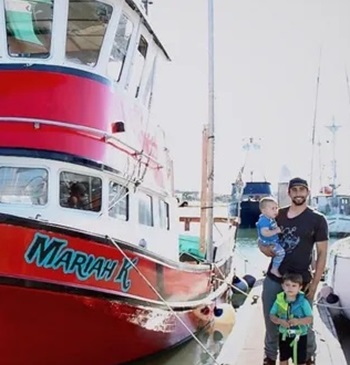 Three people are in a San Francisco-area hospital after their fishing vessel caught on fire about 50 nautical miles off the coast of Brookings on Tuesday. According to Petty Officer Briana Carter, a public affairs officer for the U.S. Coast Guard 13th District, a good Samaritan got the three survivors out of the water and transferred them to a Coast Guard vessel, which brought them to shore for care. According to a GoFundMe page set up on behalf of Emanuel Silveira, the Mariah K is “gone due to the engine exploding.” The campaign was created by Jaimie Ouellette, who said Silveira is his/her son-in-law. Silveira has burns covering 60 percent of his body and is expected to stay in the hospital for about three months “due to many estimated surgeries.” Video, more, >>CLICK TO READ<< 06:33
Three people are in a San Francisco-area hospital after their fishing vessel caught on fire about 50 nautical miles off the coast of Brookings on Tuesday. According to Petty Officer Briana Carter, a public affairs officer for the U.S. Coast Guard 13th District, a good Samaritan got the three survivors out of the water and transferred them to a Coast Guard vessel, which brought them to shore for care. According to a GoFundMe page set up on behalf of Emanuel Silveira, the Mariah K is “gone due to the engine exploding.” The campaign was created by Jaimie Ouellette, who said Silveira is his/her son-in-law. Silveira has burns covering 60 percent of his body and is expected to stay in the hospital for about three months “due to many estimated surgeries.” Video, more, >>CLICK TO READ<< 06:33
B.C. commercial fisherman fined $33K for harvesting catch in unique reefs
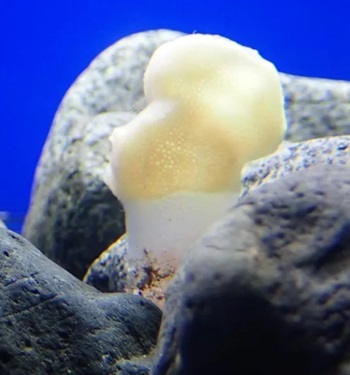 The owner of a commercial halibut vessel in British Columbia received more than $33,000 in fines for fishing in a marine protected area containing glass sponge reefs unique to the waters of the Pacific Northwest. Fisheries and Oceans Canada says a provincial court judge handed down the fine in May to Brent Belveal, who pleaded guilty to offences under the Fisheries Act. It says Belveal, operator of the vessel Gypsy Soul, harvested and sold his illegal catch from within the Queen Charlotte Sound Glass Sponge Reef Marine Protected Area near Bella Bella off B.C.’s central coast. The department describes the reefs as “globally unique ecosystems.” more, >>CLICK TO READ<< 10:39
The owner of a commercial halibut vessel in British Columbia received more than $33,000 in fines for fishing in a marine protected area containing glass sponge reefs unique to the waters of the Pacific Northwest. Fisheries and Oceans Canada says a provincial court judge handed down the fine in May to Brent Belveal, who pleaded guilty to offences under the Fisheries Act. It says Belveal, operator of the vessel Gypsy Soul, harvested and sold his illegal catch from within the Queen Charlotte Sound Glass Sponge Reef Marine Protected Area near Bella Bella off B.C.’s central coast. The department describes the reefs as “globally unique ecosystems.” more, >>CLICK TO READ<< 10:39
He was found fatally shot in his truck 15 years ago. Whatcom County detectives believe it was an ambush
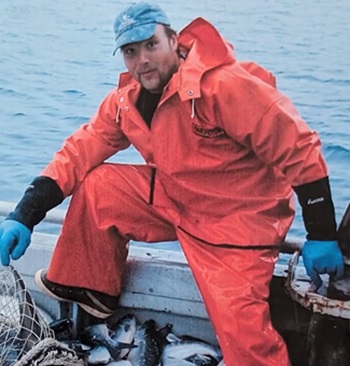 Fifteen years have gone by with no tips to help Whatcom County Sheriff’s detectives solve an Everson man’s homicide. Even so, detectives say they are close to solving the case. On July 28, 2009, Jeff Little was found dead in the front seat of his pickup truck on Massey Road. The 34-year-old had been shot to death. Detectives found at least 11 bullet holes in his truck, three of which struck Little. Jeff Little worked as a commercial fisherman in Alaska but returned to Washington in July to get medical attention for an injury in his hometown. “He was in the engine room, and he hurt his knee, and he had to come home to have it looked at,” his brother, Joel Little, said. “In less than 24 hours of him being home, he was gone.” Video, more, >>CLICK TO READ<< 20:14
Fifteen years have gone by with no tips to help Whatcom County Sheriff’s detectives solve an Everson man’s homicide. Even so, detectives say they are close to solving the case. On July 28, 2009, Jeff Little was found dead in the front seat of his pickup truck on Massey Road. The 34-year-old had been shot to death. Detectives found at least 11 bullet holes in his truck, three of which struck Little. Jeff Little worked as a commercial fisherman in Alaska but returned to Washington in July to get medical attention for an injury in his hometown. “He was in the engine room, and he hurt his knee, and he had to come home to have it looked at,” his brother, Joel Little, said. “In less than 24 hours of him being home, he was gone.” Video, more, >>CLICK TO READ<< 20:14
U.S. Offshore Wind Opponents Seek to Form National Group to Fight Projects
 U.S. activists opposed to offshore wind development are forming a national coalition aimed at fighting projects from California to New England, according to the effort’s founder and two other organizations. The National Offshore-wind Opposition Alliance, or NOOA, aims to bring a national profile to what is currently a fractured movement of dozens of local groups, according to its president, Mandy Davis. Offshore wind is a nascent industry in the United States and a key pillar of U.S. President Joe Biden’s plan to combat climate change. His administration’s push to install turbines along every U.S. coastline has attracted pushback, including multiple lawsuits, from residents concerned about the industry’s impact on tourism, property values, fishing and marine habitats. more, >>CLICK TO READ<< 08:25
U.S. activists opposed to offshore wind development are forming a national coalition aimed at fighting projects from California to New England, according to the effort’s founder and two other organizations. The National Offshore-wind Opposition Alliance, or NOOA, aims to bring a national profile to what is currently a fractured movement of dozens of local groups, according to its president, Mandy Davis. Offshore wind is a nascent industry in the United States and a key pillar of U.S. President Joe Biden’s plan to combat climate change. His administration’s push to install turbines along every U.S. coastline has attracted pushback, including multiple lawsuits, from residents concerned about the industry’s impact on tourism, property values, fishing and marine habitats. more, >>CLICK TO READ<< 08:25
Athearn Marine Agency Boat of the Week: 57′ Aluminum Dragger with Federal & State Permits
 To review specifications, information, and 25 photos’, >click here< To see all the boats in this series, >click here< 06:44
To review specifications, information, and 25 photos’, >click here< To see all the boats in this series, >click here< 06:44
Biden-Harris Administration Announces More Than $105 Million for West Coast and Alaska Salmon
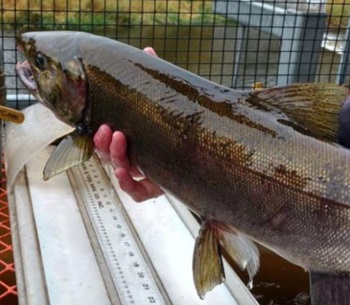 Today, the Department of Commerce and NOAA announced more than $105 million in recommended funding for 14 new and continuing salmon recovery projects and programs. Located along the West Coast and in Alaska, these state and tribal efforts will be funded through the Pacific Coastal Salmon Recovery Fund (PCSRF). The funds include Fiscal Year 2024 annual appropriations as well as $34.4 million under the Bipartisan Infrastructure Law and $7.5 million under the Inflation Reduction Act, and will aid programs and projects in Alaska, California, Idaho, Oregon and Washington that include habitat restoration, stock enhancement, sustainable fisheries and research and monitoring. “This $105 million investment, made possible thanks to the Biden-Harris Administration’s Investing in America agenda, will build on decades of salmon recovery work, while helping Pacific coast Tribes and Alaska Natives sustain their communities and cultural traditions in the face of climate change,” said U.S. Secretary of Commerce Gina Raimondo. “This is a result of the most ambitious climate agenda in history, and I am proud that nearly half of all funds in this announcement are being awarded to Tribal applicants.” more, >>CLICK TO READ<< 17:55
Today, the Department of Commerce and NOAA announced more than $105 million in recommended funding for 14 new and continuing salmon recovery projects and programs. Located along the West Coast and in Alaska, these state and tribal efforts will be funded through the Pacific Coastal Salmon Recovery Fund (PCSRF). The funds include Fiscal Year 2024 annual appropriations as well as $34.4 million under the Bipartisan Infrastructure Law and $7.5 million under the Inflation Reduction Act, and will aid programs and projects in Alaska, California, Idaho, Oregon and Washington that include habitat restoration, stock enhancement, sustainable fisheries and research and monitoring. “This $105 million investment, made possible thanks to the Biden-Harris Administration’s Investing in America agenda, will build on decades of salmon recovery work, while helping Pacific coast Tribes and Alaska Natives sustain their communities and cultural traditions in the face of climate change,” said U.S. Secretary of Commerce Gina Raimondo. “This is a result of the most ambitious climate agenda in history, and I am proud that nearly half of all funds in this announcement are being awarded to Tribal applicants.” more, >>CLICK TO READ<< 17:55
Athearn Marine Agency Boat of the Week: 60′ Steel Scalloper, 425HP, Cummins KT19-M Diesel
 To review specifications, information, and 26 photos’, >click here< To see all the boats in this series, >click here< 06:30
To review specifications, information, and 26 photos’, >click here< To see all the boats in this series, >click here< 06:30
Fishing communities welcome B.C. intention to reform licensing and quotas
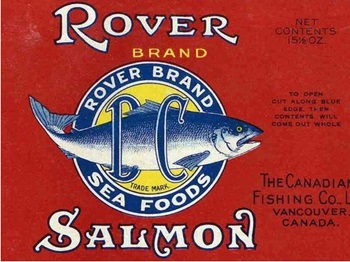 As part of the Coastal Marine Strategy unveiled last week, the province says it’s moving toward an owner-operator system for quota and licences. Under the new system, licence and quota holders would also need to be active fish harvesters — something advocacy groups and First Nations have been requesting for years. A transition to an owner-operator system would aim to eliminate the ability of a few giants to stake a majority claim on B.C.’s fishing grounds. One company alone, Jim Pattison’s Canfisco, owns double-digit percentages of some fish quotas, worth tens of millions of dollars. An owner-operator system is not a novel concept in the country. Atlantic Canada has had one in place for years, and as a result, has lower costs compared to B.C. more, >>CLICK TO READ<< 08:21
As part of the Coastal Marine Strategy unveiled last week, the province says it’s moving toward an owner-operator system for quota and licences. Under the new system, licence and quota holders would also need to be active fish harvesters — something advocacy groups and First Nations have been requesting for years. A transition to an owner-operator system would aim to eliminate the ability of a few giants to stake a majority claim on B.C.’s fishing grounds. One company alone, Jim Pattison’s Canfisco, owns double-digit percentages of some fish quotas, worth tens of millions of dollars. An owner-operator system is not a novel concept in the country. Atlantic Canada has had one in place for years, and as a result, has lower costs compared to B.C. more, >>CLICK TO READ<< 08:21
Unalaska, Aleutians East Borough oppose Rep. Peltola’s proposed trawling limitations
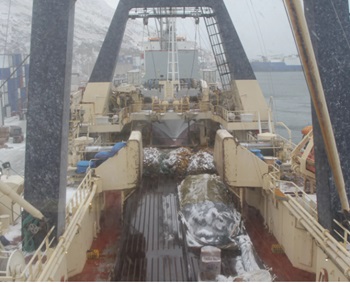 Communities in the Aleutians are pushing back against proposed legislation that would bring stricter regulations to the Bering Sea trawl fishery. The City of Unalaska and the Aleutians East Borough are among 53 organizations that signed onto a letter sent to U.S. Rep. Mary Peltola, urging her to withdraw H.R. 8507, a bill she sponsored in May. The proposed legislation aims to add new regulations to where trawling can take place across the United States, not only in Alaska. Trade organizations and some coastal communities whose economies rely on trawl fisheries have pushed back against the bill, asking the congresswoman to repeal it. “If enacted, H.R. 8507 would directly harm fishermen and coastal communities in Alaska and throughout our nation, along with countless other people who rely on a healthy domestic seafood sector for food, jobs, and their way of life,” the letter said. more, >>CLICK TO READ<< 13:28
Communities in the Aleutians are pushing back against proposed legislation that would bring stricter regulations to the Bering Sea trawl fishery. The City of Unalaska and the Aleutians East Borough are among 53 organizations that signed onto a letter sent to U.S. Rep. Mary Peltola, urging her to withdraw H.R. 8507, a bill she sponsored in May. The proposed legislation aims to add new regulations to where trawling can take place across the United States, not only in Alaska. Trade organizations and some coastal communities whose economies rely on trawl fisheries have pushed back against the bill, asking the congresswoman to repeal it. “If enacted, H.R. 8507 would directly harm fishermen and coastal communities in Alaska and throughout our nation, along with countless other people who rely on a healthy domestic seafood sector for food, jobs, and their way of life,” the letter said. more, >>CLICK TO READ<< 13:28






